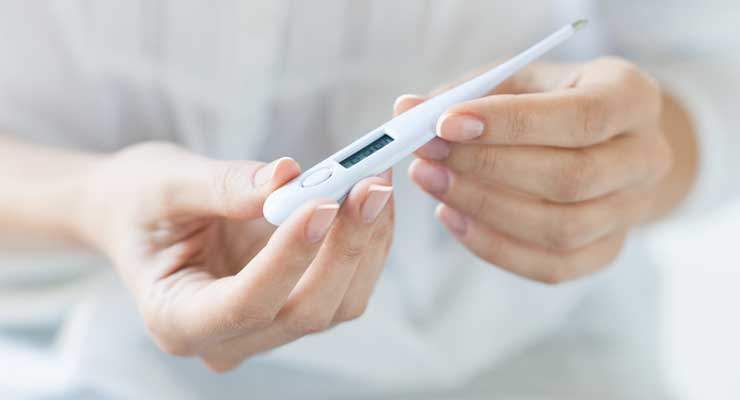Charting your basal body temperature gives you valuable insight and information about your menstrual cycle. Simply taking your temperature every morning tells you when you have ovulated. It shows where you may have fertility problems and can even tell you that you are pregnant. However, using your basal temperature as a sign of pregnancy is easier if you have been charting it for several months. Reading and interpreting your basal temperature chart takes practice. Once you become adept at understanding your temperature cycle and chart as well as determining your exact day of ovulation, then when your chart does start to show a pregnancy, it will probably stand out.
Basal Temperature As Sign of Pregnancy
Charting Basal Temperature
By charting your temperature every morning upon waking, you can identify the day you ovulate and the length of your luteal phase. The day after ovulation, your basal body temperature rises and remains high until your period starts. By knowing when you ovulate, you can better time intercourse to increase your chances of conceiving. The luteal phase is the phase following ovulation, which needs to be at least 10 days long for implantation to occur, according to Toni Weschler in “Taking Charge of Your Fertility.”
18 Days of High Basal Temperatures
If your temperatures have remained high for 18 days following the day you ovulated, then congratulations just might be in order. An 18-day luteal phase “is almost always an indication of pregnancy” says Weschler. If you have reached that 18-day mark, now would be a good time to take a pregnancy test.
Abnormally Long Luteal Phase
After several months of charting, you are probably more than a little familiar with all the norms of your temperature cycle. A change from previous months in your luteal phase may be a positive sign. If your normal luteal phase tends to last 12 or 13 days, a 14- or 15-day luteal phase may indicate you are pregnant.
Triphasic Pattern
In non-pregnant women, the high temperatures tend to remain about level before coming down a day or two before, or the day of, the start of menstruation. In pregnant women, however, often there is a second jump to a higher level of temperatures. This gives the chart three levels, pre-ovulation, the first rise right after ovulation and then a second rise in temperatures. Weschler believes that this second jump happens right after implantation and states that she sees this pattern in most pregnancies.
Missed Days
Missing a day or two when charting is not cause for concern, you can still use your chart to help detect a pregnancy. Even a chart missing several entries can show the signs of a pregnancy, especially if your basal temperature remains high for 18 days. If you are not certain of your ovulation day, then you will have to estimate the length of your luteal phase, making this method less accurate for determining if you are pregnant.
Basal Temperature As Sign of Pregnancy:






